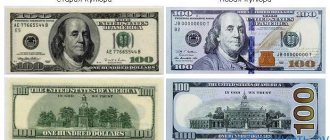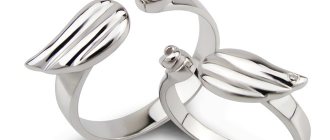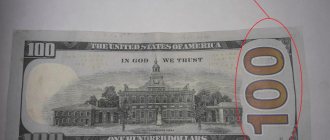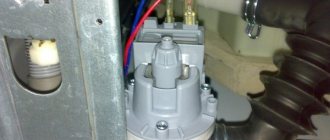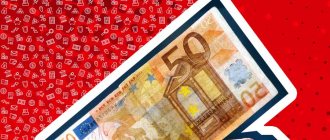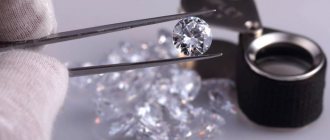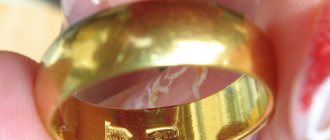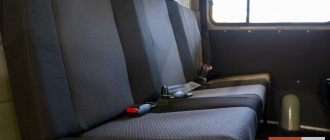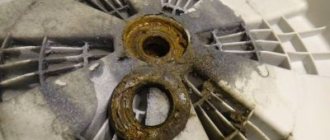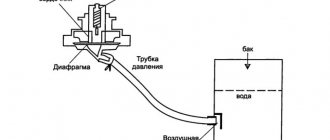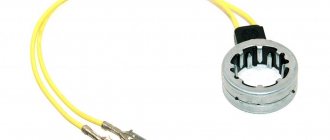People who frequently deal with foreign currencies should know how to check the authenticity of dollars. The reason for this is that counterfeit money can be found in the most unexpected places.
A particular risk arises when making large transactions when paying in cash in foreign currency.
To avoid deception, we recommend that you read this article and study information on how to distinguish a dollar from a fake.
The most popular foreign banknote is one hundred US dollars, so we will focus on this money.
What do dollars look like: description of appearance
Dollars are in circulation both within the United States and in many countries in Asia and Latin America. It is one of the most popular currencies in the world.
US banknotes with different denominations on the front and back sides.
The appearance of banknotes varies depending on the denomination. On the front side, the central place is occupied by portraits of American presidents. On the back are images of historical monuments and attributes of US statehood.
| Banknote denomination | Statesman on the obverse | Featured object on reverse |
| 1 | D. Washington | The Great Seal of the United States, which is used to authenticate government acts |
| 2 | T. Jefferson | Reproduction of the painting “Declaration of Independence” by John Trumbull |
| 5 | A. Lincoln | Abraham Lincoln Memorial in Washington DC |
| 10 | A. Hamilton | US Treasury |
| 20 | E. Jackson | The White house |
| 50 | W. Grant | Capitol |
| 100 | B. Franklin | Palace of Independence |
The most common banknotes in free circulation are 1.5, 10, 20 and 100 dollars. To quickly identify banknotes, it is advisable to remember the distinctive features of their design.
By paint quality
All paint used in the production of banknotes is a special development, the composition of which is strictly classified. Its only manufacturer in the world remains the Bureau of Engraving and Printing of the United States Treasury, which supplies it in limited quantities for printing national currency.
The black ink that can be seen on the front of a bank note (except for the alphabetic and numeric bank code and the image of the Federal Bank of America seal) is magnetic. On the back, the image is made with a different paint that does not have magnetic properties.
What is the largest US dollar bill currently?
Until 1945, the United States printed and issued banknotes in denominations of 500, 1,000, 5,000 and 10,000 dollars. But three generations of Americans have grown up without ever seeing a single bill with denominations higher than $100.
On July 14, 1969, an order was issued that no $500, $1,000, $5,000, or $10,000 banknotes placed in Federal Reserve Banks should be put into circulation. However, these bills still remain legal tender.
According to the US Secret Service, the Treasury Department issued a $100,000 , or “gold certificate.” It has never been in circulation and is used exclusively between US Federal Reserve banks.
Paper
- thinner than usual. The counterfeit paper is ordinary paper made from cellulose, so it is much thicker than a real bill.
- rustles because paper is the same fabric, it consists of cotton (75%) and linen (25%);
- not afraid of water. If you wet it, then after drying it will not lose its properties, but ordinary paper becomes unusable after such a procedure.
On the holographic stripe the number 100 moves
Banknotes that are most often counterfeited
Creating a high-quality fake is extremely expensive. For this reason, it is not advisable to falsify small banknotes.
In the United States, counterfeit $20 bills are the most common. They are actively used for cash payments. Large purchases are often paid for with bank cards.
Outside the United States, scammers prefer to counterfeit $100 bills. Many people have little idea what exactly such banknotes look like and how to distinguish them from counterfeits. Therefore, they are easier to distribute among tourists and local residents. At the same time, the production and sale of such banknotes brings high profits.
In 2010, a new $100 bill was presented, which has the latest levels of security. In practice, it is extremely difficult to fake. Now criminals practically do not touch her. Perhaps it's just a matter of time. However, old-style banknotes are still in use, and they are actively counterfeited.
The new $100 bill has a bluish tint, while the old one has a green tint.
The image on them is also slightly modified, different fonts are used.
Hologram strip
The next way to check the authenticity of dollars is a hologram. This innovation is inherent only to new banknotes. This strip was already mentioned above in the article, but now I would like to talk about it in more detail.
Firstly, this strip is made in 3D design.
The number 100 can be traced on it, which indicates the denomination of the banknote. But that's not all! This strip is transparent, which makes it possible to see the background of the bill. This hologram strip is also useful for the blind, as it has a ribbed surface, which gives it tactile properties.
Checking 100 dollar bill
Since new counterfeit dollars are an exceptional phenomenon, let’s consider a more widespread forgery, that is, old-style $100 bills:
How to distinguish dollars from fakes, signs of authenticity:
- material. The paper of a real dollar is actually cloth. It rustles a little, and if the money is wet, after drying it will be normal, without defects;
- the print is three-dimensional, so a fake can be identified by touch - it is smooth;
- the inscription “100 dollars” changes color at an angle (green, black);
- run your fingernail over Franklin's camisole; on the real one, the nail clings to the design;
- all numbers on the banknote must match (but it is clear that scammers observe this when counterfeiting dollars). But sometimes they print the same numbers on a batch. If you receive several bills from someone at once, compare the numbers, they should not match;
- the protective strip is visible in the light; “USA 100” is written on it;
- The frame of the bill is clear and continuous, the ornaments are well expressed. Fakes may have some blurriness. The portrait of Franklin on real money is also clear and detailed.
If you come across a new type of banknote, then there is nothing to worry about. It's too complicated for scammers.
Some scammers target tourists specifically. They wash off the denomination on $1 or $5 bills and print “100” on it. Therefore, it is extremely important to know what exactly is depicted on the 100 dollars - Franklin.
How to spot a fake $2 bill? In fact, it is extremely rare, it can even be called a collector's item. And definitely no one will fake it. But if you are interested in it for the purpose of collecting, then in general the verification method is the same as for 100 dollars - visual.
How to distinguish a fake 50 dollar bill - everything here is also similar, to the touch, visually. If you look at the light, you will see a protective line with the inscription “USA 50”.
A reminder on how to recognize counterfeit money
Counterfeit banknotes, as a rule, are sold at wholesale and retail trade enterprises, in the service sector, as well as to individual citizens engaged in trade, including in markets. All citizens need to know the distinctive features of counterfeit banknotes and the procedure to follow when they are detected. When receiving large denomination banknotes, you should be very careful and always check their authenticity, at least three security features on the banknote.
Detailed information on how to recognize counterfeit money is contained on the official website of the Central Bank of Russia on the Internet at: http:/www.cbr.ru. Here are the signs of authenticity that can be recognized with the naked eye.
Bank of Russia banknote of the 1997 model with a nominal value of 500 rubles, modified in 2010
Banknote size 150 x 65 mm
On the front side of the banknote, in the lower part of the left coupon field to the left of the main image, there is the text “MODIFICATION 2010”.
Signs of authenticity controlled by light
Signs of authenticity controlled by changing viewing angles
Bank of Russia banknote of the 1997 model with a nominal value of 1000 rubles, modified in 2010
Banknote size 157 x 69 mm
Signs of authenticity controlled by light
Signs of authenticity controlled by changing viewing angles
Bank of Russia banknote of the 1997 model with a nominal value of 5000 rubles, modified in 2010
Banknote size 157 x 69 mm
Signs of authenticity controlled by light
Signs of authenticity controlled by changing viewing angles
If a banknote offered to you raises doubts about its authenticity, do not refuse the “suspicious” banknote and do not return it to the seller. Immediately call the police, under any pretext (for example, lack of change), try to detain the trafficker until the arrival of internal affairs officers, remember the signs of this person, the transport in which he arrived. The police can be called by calling 02 or from a cell phone 112, 102.
Tactile sensations
In many cases, you can distinguish a fake from a genuine banknote by touch. To do this, it is useful to know what signs you should pay attention to first.
Structure
In terms of physical properties, the material from which dollars are made is more reminiscent of fabric rather than cellulose paper.
Dollar bills have high mechanical strength. They withstand exposure to water without consequences and are easily restored after being crushed. Bank notes are elastic and can stretch a little. Upon tactile examination, the material feels a little rough.
Thickness
The thickness of the banknote is less than that of the counterfeits. When making real dollars in 2022 and earlier, the paper is pressed so it is strong and thin. Counterfeiters use low quality paper. If there is a similar banknote of the same denomination and the same series and you are confident in its authenticity, you can compare them. They should be the same.
Visually, dollar bills look quite thick. However, this effect is achieved through the use of relief printing. The thickness of bank notes is actually quite small. Even the highest quality counterfeits are printed on thicker paper.
By serial numbers
The serial number is a combination of two alpha and eight numeric characters on the $1 and $2 US dollar bills and three alpha and eight numeric characters on the $5, $10, $20, $50 and $100 bills:
- The first letter determines the series number; the eight-digit code indicates the serial number of the monetary unit in this series. By the last letter you can find out the number of uses of a given number in a certain series.
- The last letter is sometimes missing, and an asterisk is printed in its place - this means that the bill was issued instead of a rejected one. In addition, every 100,000,000 banknote printed must be marked with an asterisk.
- The bill number, which includes numbers and letters, must be printed in one line and have equal indentation between all numbers. License plates must be the same size and have identical spellings of the same characters.
- The ink used to print the serial number is the same color as the Treasury seal image.
- The serial number determines the place and day of manufacture of the banknote. Serial numbers are a sign of uniqueness and are not repeated.
Protective signs
Genuine dollar banknotes have a number of degrees of protection:
- Magnetic – part of the image is made using paint that has ferromagnetic properties. To check this characteristic, a special sensor is required, which is equipped with banknote detectors.
- Iris roll. It represents a gradient transition from one color to another. A home printer is not capable of simulating this effect.
- Banknote size. The dollars in circulation are 155.956 mm long and 66.294 mm wide. Deviation of no more than 2 mm in both directions is allowed.
- 3D ribbon used on $100 bills. On it you can see numbers and images of bells that move when the angle of inclination changes.
- Metallic paint. Used for printing NextGen series banknotes. On the obverse of $10, $20, and $50 tickets, to the right of the president's portrait are images of the Statue of Liberty's torch, an eagle with a shield, and a star, respectively.
- Background glow in ultraviolet. Genuine banknotes do not have this phenomenon. The paper used by scammers will glow when exposed to UV rays. At the same time, in authentic banknotes, security fibers that are embedded in the structure of the paper and a hidden thread that runs across the entire width of the banknote luminesce.
By the presence of colored fibers
Genuine US dollars are distinguished from fakes by colored fibers - peculiar magnetic inclusions, randomly located in different areas of the banknote. These should be microfibers of blue and red color, pressed into the paper and passing through it, and not painted on its surface.
It should be noted that counterfeiters have learned to very sophisticatedly imitate the presence of magnetic inclusions, so “by eye” they can turn out to be almost identical to the real thing. Only an ultraviolet test will help determine whether the bill is real or not, because silk microfibers should glow.
RECOMMENDED: Psychology of money - how to become rich
Where are counterfeit dollars sold?
Most often, they fall into the hands of tourists who have never seen dollars before or have seen them, but not so often. So if you're traveling to a country where this currency is in use, be sure to learn how to spot counterfeit dollars from real ones.
At any time you can be given a fake 50 dollars in change, and sometimes you can stumble upon a fake 100 dollars even in not entirely honest exchangers. It certainly doesn't hurt to be vigilant.
In Russia, the risk of receiving a counterfeit dollar is extremely small. If you buy currency at a bank, they definitely won’t give you a counterfeit. And if you make a transaction at a non-bank point (for example, send a money transfer in foreign currency), carefully check the change. If you receive a transfer in foreign currency, especially study all the issued bills. The cashier himself may miss the fake and unknowingly give it to you.
If you get your hands on a counterfeit dollar, if you wonder too late how to recognize a counterfeit dollar, the situation is unpleasant. You've just already lost your money. You won’t be able to sell a non-original banknote even if you want to; in Russia, stores don’t work with it.
First, go to where you received the bill from. Of course, if this is possible: sometimes people bring fakes from other countries. If the counterfeit dollar was received domestically and the damage is significant, you can contact the police. Perhaps, if the scammer is exposed, you will be able to get something back through the court. But you'll have to tinker - that's a fact.
What denomination is most often counterfeited?
First, let's figure out what kind of banknotes are in use. If all Russians are familiar with the assortment of rubles, then with American currency everything is different. If you contact her extremely rarely, for example, only when traveling abroad, we recommend that you familiarize yourself with the denominations: these are 1, 2, 5, 10, 20 and 100 dollars.
In general, questions about how to determine a real 1 dollar almost never arise. Fraudsters are not interested in small banknotes. As they say, there is no “exhaust” from them, but a lot of fuss. Similarly, professional counterfeits of 10, 50 and 100 ruble banknotes are not found in Russia. Exceptions are those printed on a printer by some children or teenagers.
Banknotes in denominations of 20 or 50 dollars are also extremely rarely counterfeited. If you go to a country where the majority of the population lives below the poverty line, you may come across such a counterfeit. There, a 100 dollar bill is too big for the majority of the population, and selling it is not always easy. The probability of encountering counterfeits of 20 and 50 dollars is low, but it cannot be completely ruled out.
Fake 100 dollars - this is the banknote that scammers “love” most. This is what is most often counterfeited. It is not the most popular, so people are not particularly familiar with it. In addition, its sale promises good profits.
An interesting fact: at one time they even wanted to take this banknote out of circulation, since it was very often counterfeited.
Where can you check dollars for authenticity?
You can verify the authenticity of dollars at banking organizations. The method is highly reliable, but will require some costs, because This service is paid.
There is another convenient option for checking banknotes - visiting a representative office of a banking equipment supplier.
Equipment sellers have samples of banknote detectors in their office for demonstration purposes. Before visiting the representative office, you will need to arrange a presentation. To check the operation of the devices, you can use your own samples of banknotes, which raise doubts about the authenticity. Presentation and consultations are free of charge. Participation in the demonstration does not impose any obligations on the event participants to purchase devices.
What to do if you find counterfeit $100 bills
If you discover a counterfeit banknote, you must immediately contact law enforcement agencies. Keeping such banknotes or using them to pay for goods is strictly prohibited, since such an act is criminally punishable. A person may well be accused of possessing and distributing counterfeit money or even counterfeiting.
It is advisable to remember the person from whom the money was received. The more detailed the circumstances of receiving counterfeit money are described, the higher the likelihood of finding the attacker.
It is advisable not to touch the banknote, but immediately transfer it to a bag. This will leave the possibility of identifying counterfeiters by fingerprints.
Data Matrix Code
You can call it a digital product passport, which each item receives when leaving the assembly line. It contains all the necessary information. Not only that the product actually belongs to the brand that is declared, but also about the materials of manufacture, basic data, category, and the presence of a certificate of conformity if it came from abroad.
When scanning, on the screen of the “Honest Sign” program you can see:
| Confirmation of originality | The code is genuine |
| Product group | Clothing, shoes, food, medicine, etc. |
| Name | For example: 049-089-20186 men's classic wool coat, brown leather/wool, PIACENZA, size 54 |
| Current state | Applied - must be with the seller, on the way - logistics, in circulation - on a shelf in a store, out - sold to the buyer, disposed of, etc. |
| Date of inspection | Indicates the day, month and year of the last scan |
| Marking identification code | An example of a long digital encoding of letters, numbers and symbols: 0104607428679090216eJIjoWH54DdU 91ffd0 92sz6kSPirApfMBftvLboE1dlWC/58hExQUqv7BBkZmk4= |
| Brand | PIACENZA |
| Manufacturer model | Using the number indicated here you can find a match with the product on the brand’s website |
| A country | Italy |
| View | Demi-season coat |
| Upper material | leather/wool |
| Lining | Atlas |
| Size | 54 |
| Name on the label | Must match what is in the database |
| Document of compliance with the EAEU Commodity Nomenclature for Foreign Economic Activity | 8413 20 000 9 - information not for the consumer. |
This is an example of what product information looks like using an Italian men's coat as an example. It shows that the buyer can receive all the confirmation of originality, find out what the item is made of, where it was produced. It should be remembered that the Data Matrix is applied only to the packaging, so when checking in the store you need to ask for the original package or box.
How to check for counterfeit using a barcode
Information about identifiers is contained in public databases that can be found on the Internet. Let's consider the option of searching through the GS1 website, where the values of Russian manufacturers are entered. If the product is produced in the Russian Federation, it can be analyzed as follows:
- go to the official GS1 resource in the Russian Federation;
- select the “Services” section;
- then go to the “Search by barcode (GTIN)” tab;
- enter the code number starting from 460-469, select what information should be displayed: about the product, manufacturer, photo.
If original products are offered, the details of the manufacturer's company, its official name, purpose, weight, possibly composition and other items entered by the manufacturer will be shown.
If the screen displays Prefix no longer subscripted, the product has been withdrawn from circulation and cannot be sold. Therefore, the code being verified belongs to the fake.
